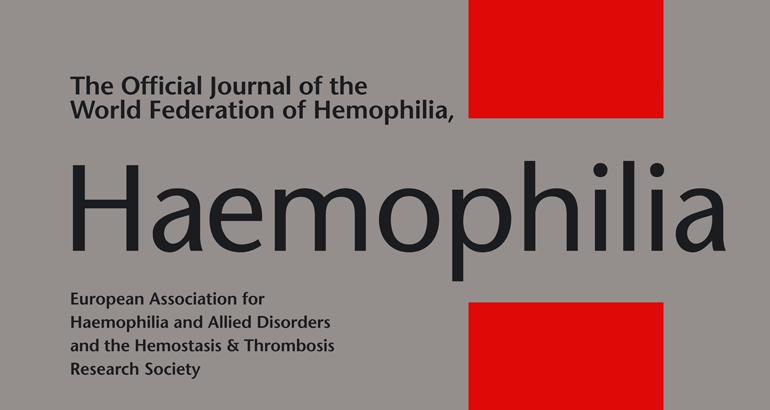Economic Benefits of Home Therapy – Japanese

Also Available In: English, Spanish, French, Arabic, Russian, Simplified Chinese 在宅療法の利用は、医療制度における経済的負担を軽減し、血友病患者とその家族双方の生活の質を向上させます。
Abstracts of the XXVI International Congress of the World Federation of Hemophilia

This special issue of Haemophilia contains abstracts presented at the XXVI WFH Congress, Bangkok, Thailand, 17-21 October 2004.
State of the Art XXVI International Congress of the World Federation of Hemophilia

This special issue of Haemophilia contains reviews and original research reports from selected scientific sessions presented at the XXVI WFH Congress, Bangkok, Thailand, 17-21 October 2004.
Report on the Annual Global Survey 2003

Compiled annually, the Annual Global Survey (AGS) provides demographic and other data on people with hemophilia, von Willebrand disease, other rare factor deficiencies, and inherited platelet disorders throughout the world.
Economic Benefits of Comprehensive Hemophilia Care

Also Available In: Japanese Patients receiving comprehensive hemophilia care have a lower mortality rate and a lower hospitalization rate for bleeding complications than those treated outside a hemophilia treatment centre.
Benefits of Treating Hemophilia with Factor Concentrate

Also Available In: Japanese Treating people with hemophilia with safe, regulated plasma-derived factor concentrate directly reduces the social and economic impact of this bleeding disorder on the patient as well as the amount of long-term support required from family, community, and government.
Economic Benefits of Basic Hemophilia Treatment & Care

Also Available In: Japanese This fact sheet demonstrates the benefits of providing basic treatment and care to people with hemophilia. Adequate care includes access to a hemophilia treatment centre and to treatment products, and education for healthcare providers, patients, and families.
What is Hemophilia? – Japanese

The 2023 edition is available in: English, Spanish, French, Arabic, Russian, Simplified Chinese This edition of the resource has also been translated into the following language, with permission from the WFH, by NMOs: Amharic, Setswana この患者向けハンドブックには、血友病の遺伝特性、症状、管理についての基本情報が記載されています。
Economic Benefits of Comprehensive Hemophilia Care – Japanese

Also Available In: English, Spanish, French, Arabic, Russian, Simplified Chinese 包括的血友病医療を受けている患者は、血友病治療センター以外の医療機関で治療を受けた患者よりも死亡率が低く、出血の合併症による入院率が低くなっています。
Economic Benefits of Basic Hemophilia Treatment & Care – Japanese

Also Available In: English, Spanish, French, Arabic, Russian, Simplified Chinese このファクトシートには、血友病患者に基本的な治療およびケアを提供するメリットが記載されています。適切なケアには、血友病治療センターおよび治療用製剤の利用、医療関係者、患者、家族に対する教育が含まれます。
Benefits of Treating Hemophilia with Factor Concentrate – Japanese

Also Available In: English, Spanish, French, Arabic, Russian, Simplified Chinese 安全で規制を順守している血漿由来凝固因子濃縮製剤で血友病患者を治療することは、出血性疾患患者への社会経済的影響、さらには政府やコミュニティ、家族から求められる長期的支援を直接軽減します。
The WFH Haemophilia Centre Twinning programme: ten years of growth, 1993-2003

By linking emerging and established treatment centres, the World Federation of Hemophilia’s Twinning Program has improved treatment and care for people with bleeding disorders around the world.
